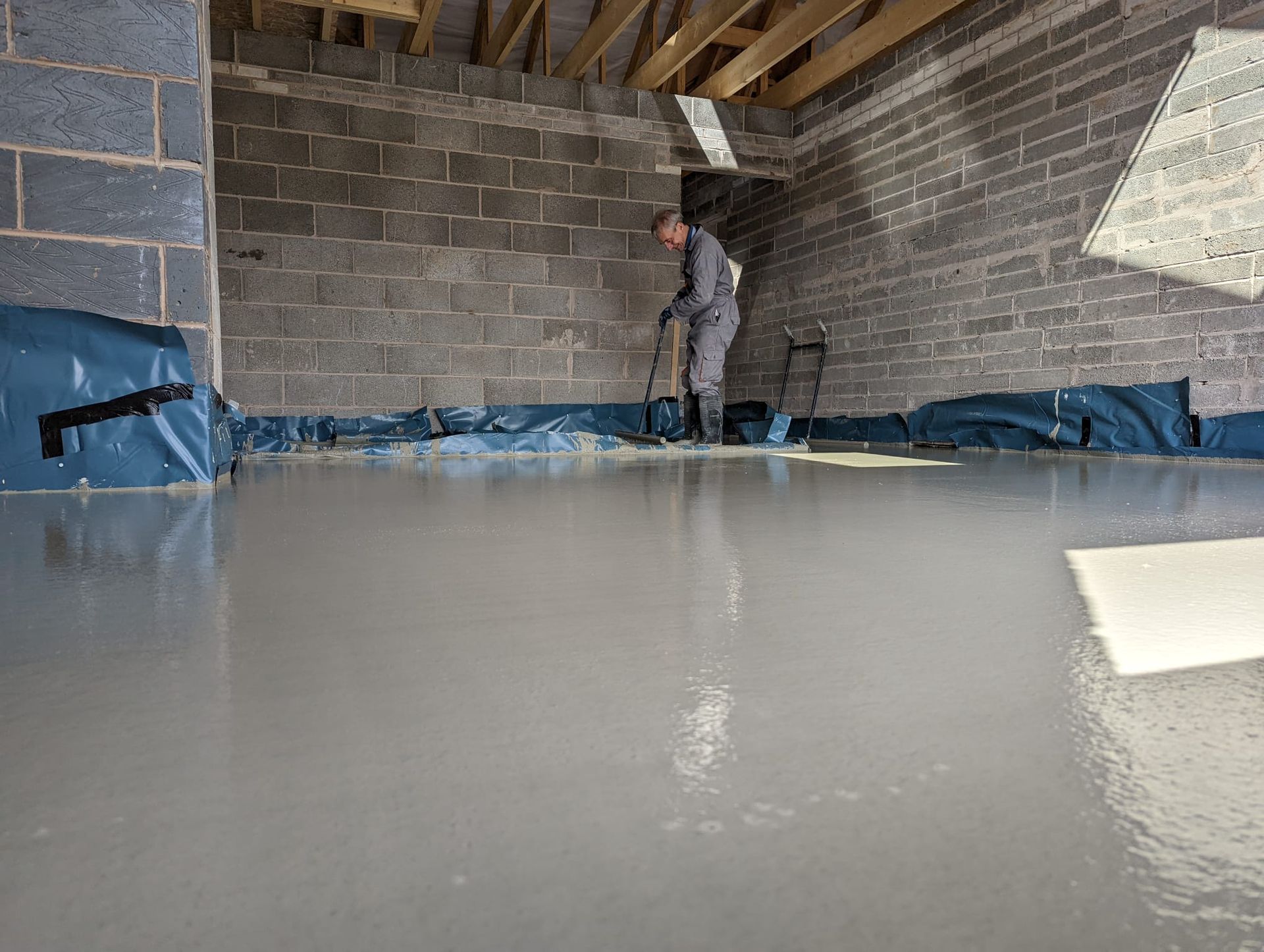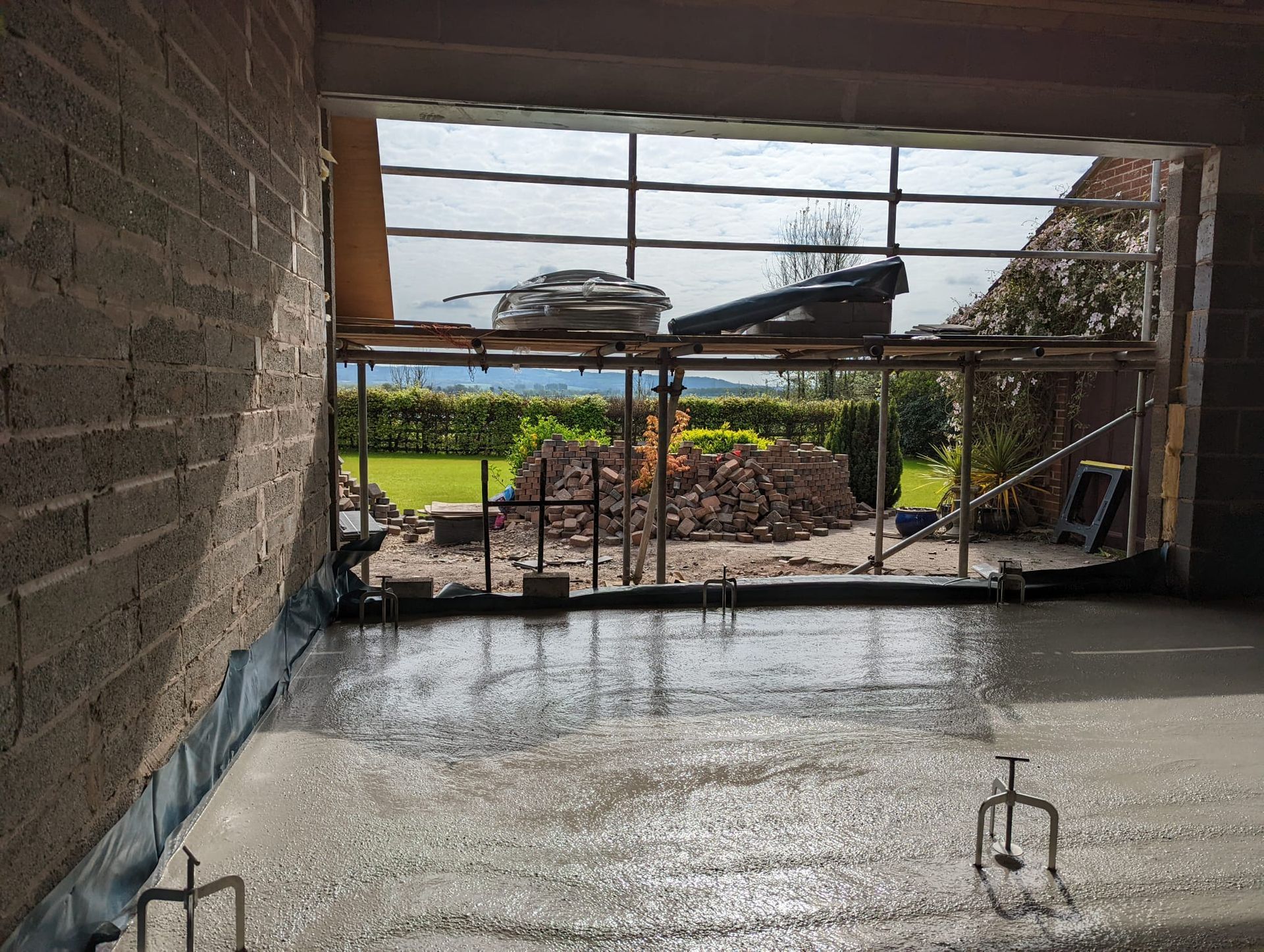How to install a liquid screed floor – the ultimate guide
If you are wondering how to install a liquid screed floor, read our guide below where we will discuss the benefits, the different types of floor screed available, preparation for your project, drying time, as well as other important advice.
Whether you are an architect or contractor working on a project with a requirement for a screed floor, or you are a homeowner looking to upgrade your home with a screed floor finish, liquid screed is increasingly used on construction projects as a cost-effective way to create smooth, even floors.
The guide below helps to inform you of the various stages of a screed installation, including best practice guidelines for you to follow. However, if you feel you would like to work with a contractor to install your liquid screed floor, we are always on hand to help here at Clockwork Screed.
At Clockwork Screed, we are a trusted provider of quality screed floor installation in Greater Manchester, Cheshire and beyond, excelling in the sourcing, delivering, and installing liquid floor screeding.
We have over thirty years’ experience and expertise in concrete and use state-of-the art mobile screeding plants that offer a more cost-effective, sustainable, and reliable floor screeding solution.

What is a liquid screed and how is it different to a traditional screed?
Liquid screed is a modern alternative to traditional screeds such as cement-based and anhydrite screeds. It offers several advantages in terms of installation and performance.
Unlike traditional screeds, liquid screed is ready-mixed on site in our mobile screeding vehicles, and pumped onto the floor, resulting in a faster and more efficient installation process.
One key characteristic of liquid floor screed is its self-levelling ability. This means that it naturally spreads evenly over the floor without the need for manual levelling. This ensures a flat, level, and smooth surface, reducing the need for additional finishing.
In contrast, traditional screeds require manual mixing and levelling. This can be time-consuming and labour-intensive, especially for larger areas.
Traditional screeds also tend to have a higher risk of air bubbles and uneven drying, leading to potential problems in the long run.
Liquid screed is particularly well-suited for underfloor heating systems due to its excellent thermal conductivity. The screed flows easily around the heating pipes, ensuring efficient heat distribution and reducing energy bills.
If you are looking for an underfloor heating system for your screed floor, we can also help you with this with our sister company Clockwork Underfloor Heating. This means one point of contact for you to manage your project, making it easier and a more effective process.
To round up, liquid screed offers significant advantages over traditional screeds. Its pumped installation and self-levelling properties result in a faster and more effective installation process.
It also provides a smooth and level surface, perfect for underfloor heating systems. By choosing liquid screed, you can achieve a high-quality, durable, and energy-efficient floor for your building project.

Preparation for laying your liquid screed
Preparation is a crucial step in achieving a successful liquid screed flooring installation. Follow these steps to ensure a smooth and long-lasting floor:
1. Clean the surface: Start by thoroughly cleaning the floor surface to remove any dust, debris, or loose particles. This will create a clean and stable base for the liquid screed.
2. Remove laitance: Laitance refers to the thin layer of weak, powdery material that forms on the surface of concrete. It must be removed before applying the floor finish.
3. Seal the floor: Before applying adhesive or liquid screed, it is essential to seal the floor to prevent moisture from seeping in. Apply a watertight membrane, ensuring full coverage and proper adhesion to the substrate.
4. Use expansion foam: Liquid screed expands and contracts with temperature changes. To accommodate this movement, insert expansion foam around the edges and at any joints, including doorways. This will prevent the liquid screed from cracking or lifting as it expands.
By following these preparation steps, you can create a solid foundation for your liquid screed floor, ensuring a smooth and level surface that is ready for the final floor covering.
How to pour liquid screed
Pouring liquid screed correctly is crucial for achieving a smooth and level floor surface. Here is a step-by-step guide to help you through the process:
1. Check for watertightness: Before pouring the liquid screed, ensure that the area is watertight. This means sealing any gaps or cracks in the subfloor to prevent moisture from seeping through.
2. Prepare the pump: Set up the pump system according to the manufacturer's instructions. Connect the hose, making sure it reaches the pouring area without any obstacles.
3. Start pouring the screed: Begin pouring the liquid screed into the area, starting from one end and working your way towards the opposite side. Maintain a consistent flow rate to ensure an even application.
Remember to follow the manufacturer's guidelines for drying times and curing processes. Properly poured liquid screed will provide a flat, level surface that is ready for the application of your chosen floor finish.
If you need assistance with installing your liquid screed, talk to our team today at Clockwork Screed. You can reach us by telephone 0161 546 6945 or email contact@clockworkscreed.co.uk and we are happy to help.
Our team can organise your screed installation, visit your site, prepare the installation, and carry out laying the screed with minimal disruption to your site. Leaving you more time to focus on other aspects of your project.
Drying time for liquid screed
“How long does it take for the liquid screed to dry?” is a common question we are asked at Clockwork Screed. Drying time for liquid screed can vary depending on several factors, including the type of screed used and the ambient conditions during installation.
The cementitious screeds we use is a fast drying option, and generally allows footfall within 24 to 48 hours.
To achieve optimal drying, it is important to consider the ambient temperature and ventilation in the area. Higher temperatures and good airflow can help accelerate the drying process.
During the initial drying phase, it is recommended to avoid heavy or permanent items on the screed surface for at least 7 days. This allows sufficient time for the screed to fully cure and achieve its maximum strength.
Underfloor heating and liquid screed
Underfloor heating combined with liquid screed offers numerous benefits, including reduced energy consumption and optimised heat distribution.
By using underfloor heating, heat is evenly spread across the entire floor, resulting in a more comfortable living environment. This efficient heat distribution also allows for lower energy bills, as the warmth is directed upwards rather than lost through walls or windows.
It benefits homeowners with a warmer home and reduced energy bills. It benefits architects and contractors as their projects will be more energy efficient and lower bills for their clients.
FAQs
How much liquid floor screed can you lay in a day?
Over 1000m² of liquid floor screed can be applied in a day.
How thinly can your liquid floor screed be laid?
Our liquid floor screed can be laid as thinly as 25mm.
How does liquid floor screed help the performance of an underfloor heating system?
The ultra-thin application of liquid floor screed allows the heat to spread easily, evenly and
responsively throughout a room.
Why choose Clockwork Screed for your next project?
Clockwork Screed are screed floor installers covering the North West of the UK, and beyond. We have over thirty years of construction experience. We continually innovate to improve our processes which is how our state-of-the-art mobile screed factories originated.
For more information on how to install liquid floor screed, you can reach us by telephone 0161 546 6945 or email us
contact@clockworkscreed.co.uk and we are happy to help.







